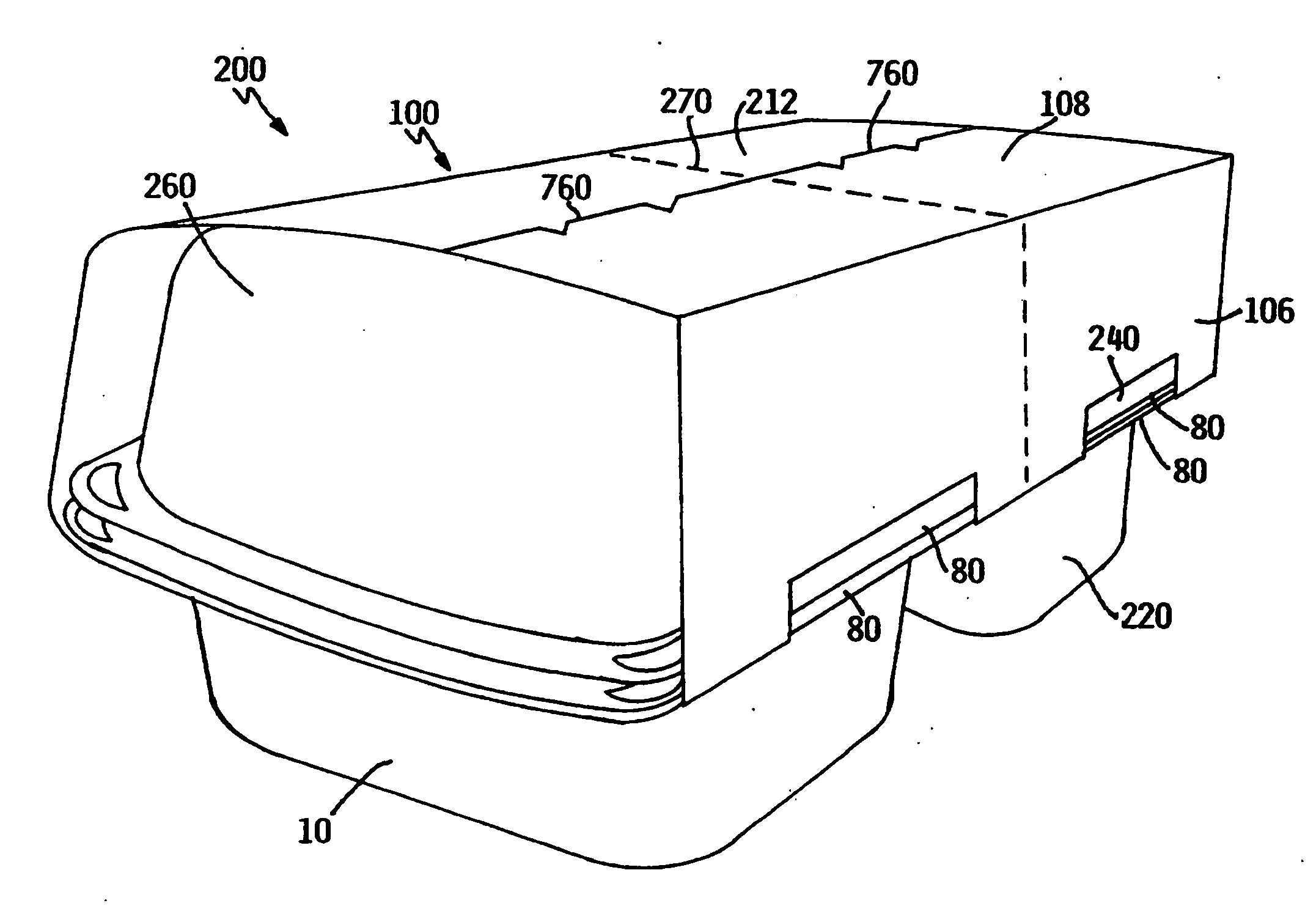Microwavable container with sleeve
a microwavable container and sleeve technology, applied in milk preservation, transportation and packaging, electric/magnetic/electromagnetic heating, etc., can solve the problems of not providing for an optimum distribution of foods within a generally rigid microwaveable container to achieve uniform temperatures, relatively expensive construction of laminated container materials, etc., to achieve convenient removal of the tray, minimize the material requirement, and optimize the effect of shipping cube and retail shelf spa
- Summary
- Abstract
- Description
- Claims
- Application Information
AI Technical Summary
Benefits of technology
Problems solved by technology
Method used
Image
Examples
Embodiment Construction
[0037] A microwavable food container 10 in accordance with the invention is shown in FIG. 1. Container 10 is generally defined by a bottom 12, a sidewall 14, a flange 16 and handles 18. Container 10 is an integrally thermoformed plastic material, such as polyolefins (e.g., polypropylene, polyethylene), blends of polyolefins, polystyrene—HIPS, or polyester resin-based materials—CPET, foamed polypropylene, polyethylene), blends of polyolefin's polystyrene—HIPS, or polyester resin-based materials—CPET, paper and paper laminations with polypropylene, polyester, etc. In an alternative embodiment, container 10 may be fabricated using known injection molding or compression molding techniques. Sidewall 14 extends upwardly from bottom 12, defining an interior 20 for containing a food item (not shown). Flange 16 extends radially outwardly and downwardly relative to a top of sidewall 14.
[0038] Handles 18 extend from the corners of flange 16. Sidewall 14 and flange 16 are uniquely configured t...
PUM
| Property | Measurement | Unit |
|---|---|---|
| thickness | aaaaa | aaaaa |
| angle | aaaaa | aaaaa |
| temperature | aaaaa | aaaaa |
Abstract
Description
Claims
Application Information
 Login to View More
Login to View More - R&D
- Intellectual Property
- Life Sciences
- Materials
- Tech Scout
- Unparalleled Data Quality
- Higher Quality Content
- 60% Fewer Hallucinations
Browse by: Latest US Patents, China's latest patents, Technical Efficacy Thesaurus, Application Domain, Technology Topic, Popular Technical Reports.
© 2025 PatSnap. All rights reserved.Legal|Privacy policy|Modern Slavery Act Transparency Statement|Sitemap|About US| Contact US: help@patsnap.com



